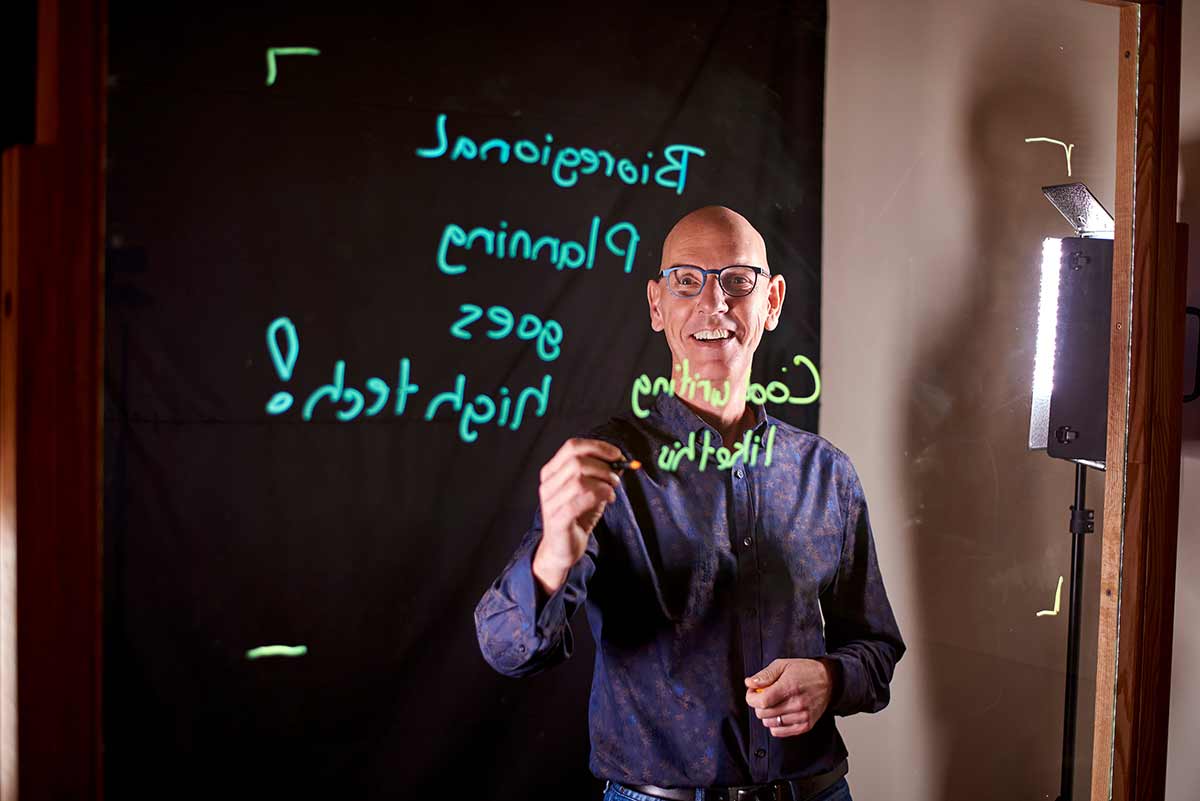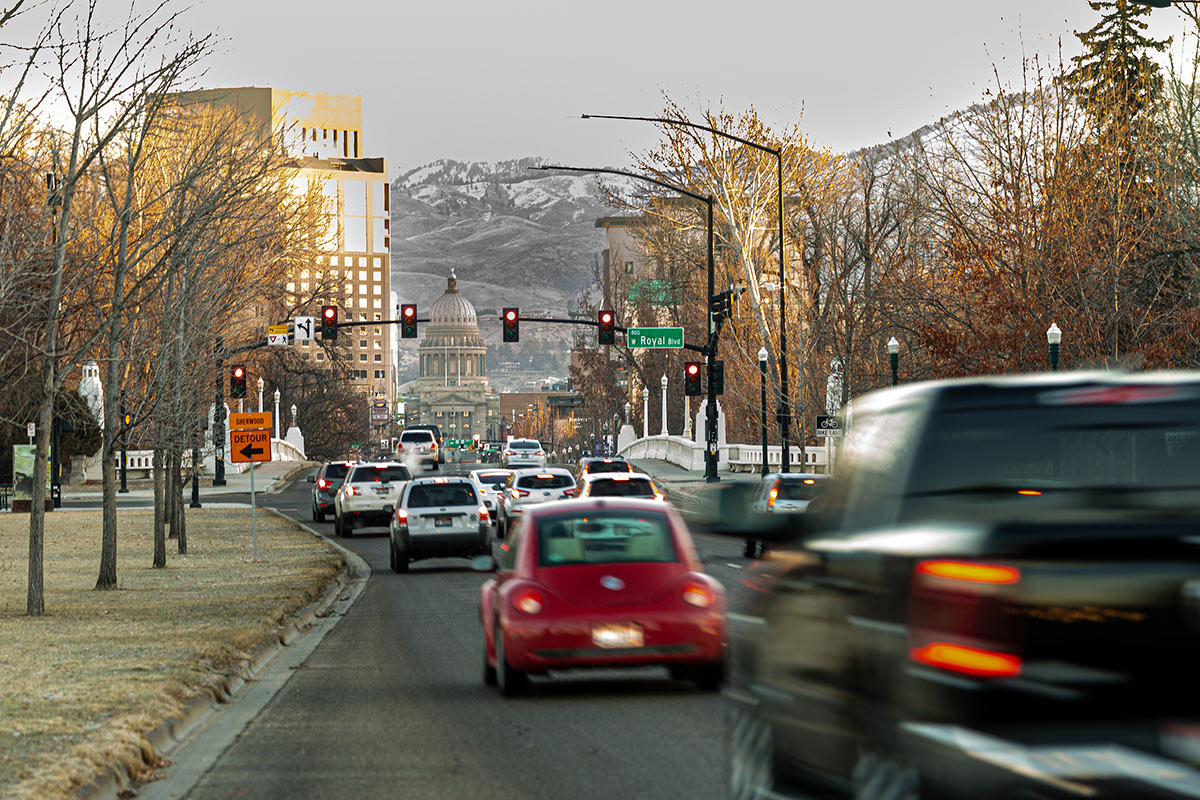Our Changing Idaho
Unique Tracking of Idaho’s Population Changes Provides Community Leaders Insights
Last October, deep in Idaho’s most remote forest — the Frank Church-River of No Return Wilderness — University of Idaho Professor Jaap Vos was leading students through a hands-on learning experience.
They holed up for three weeks of studies. Only a U.S. Postal Service plane had access to U of I’s Taylor Research Center.
But in the outside world, the rural planning professor’s work wasn’t slowing down. Vos’ expertise on Idaho’s population transformations was in such high demand that a top state agency asked him to fly out to present his findings.
Vos recently found that one in four people in Idaho’s growing population of 1.8 million moved to the state in the past 10 years and discovered that the influx of new residents coincided with a steady departure of existing residents.
So, after working with students on how Idaho’s population change has influenced tourism and recreation, Vos boarded that postal service plane midway through the excursion, flew to Twin Falls, and presented to a room full of community planners and business leaders eager to listen at the Idaho Conference on Recreation and Tourism.
“We’re not in the middle of nowhere anymore,” Vos said in an interview. “We’ve been discovered.”
Planning the Future
While the U of I professor has aided community planners for years, attention to Vos’ work grew after his recent research used an unusual data source to make sense of Idaho’s fast-changing demographics. He found that nearly half-a-million people moved to Idaho in the past decade, but nearly 300,000 residents left during the same period.
Idaho grew substantially but, more importantly, it underwent massive change, Vos stresses.
“We’re not in the middle of nowhere anymore. We’ve been discovered..”
— Jaap Vos, Professor of Planning and Natural Resources
To reach these conclusions, Vos dug into an untapped source of information: driver’s licenses. Because new Idaho residents must surrender their previous state’s driver’s license within 90 days of moving and then register their vehicle at their new addresses, he thought the data could offer a real-time glimpse into Idaho’s changing demographics.
Researching how communities are changing is complicated. Scientists’ focused hypotheses and research questions don’t fit when predicting the future with limited data, Vos said. The environments that he’s searching for answers in are difficult to measure.

“My research is not published in peer-reviewed journals, but it is very much used by decision-makers,” Vos said.
In planning, shortcomings are felt community-wide. If population data is off, infrastructure might not fit the community’s needs. People could be stuck in rush hour traffic longer. Schools might not be able to serve the influx of new children.
State and local leaders say Vos’ research provides critical insights into Idaho’s population shifts, helping them answer difficult questions that the census data cannot answer.
To date, at the Idaho Department of Commerce, we have not seen a more in-depth approach to the population trends in Idaho,” Idaho Department of Commerce Director Tom Kealey said.
The research is not Vos’ first foray into helping state leaders make sense of demographic change. For years, Idaho’s community planners have recognized the U of I professor as a forward-thinking researcher who regularly gathers local planners to talk through issues and offer advice, said Owyhee County Planning Director Mary Huff.
Huff first met Vos a decade ago. She said he has consistently encouraged planners to dig deep in their data, find its errors and what it really says.
Growing, or Changing?
Vos argues that understanding change is more relevant than understanding growth. Past census data shows Idaho is one of the nation’s fastest-growing states. Looking deeper, Vos said, at who Idahoans are now, what they want and how they live, will provide valuable insight into how areas are changing, what residents need and how to shape communities to reflect local values.

In Owyhee County, where the largest town is home to less than 5,000 people, locals are feeling the effects of Idaho’s dramatic population change. Huff said it’s more complicated than the common complaint that Californians are moving to Idaho. She said data from Vos and others suggests that as more people flood into Idaho from other states, Treasure Valley residents are spreading out into rural communities.
“Jaap’s data helped show that we were also having a lot of movement within the state as people from more populated areas were looking to move farther out into suburbs or rural places to get back a bit of the slower Idaho they once knew,” Huff said.
Data also helps cut through the noise of planning, a field that relies on a mix of public opinion, research and data to tease out the truth.
In creating Owyhee’s development plan years earlier, locals stressed retaining the county’s agricultural roots, with farmland surrounding neighborhoods and business areas. But the wave of developers looking to set up shop in the area signaled something different: Locals want more houses on that land, not farms.
Jaap Vos, Ph.D.
Professor of Planning and Natural Resources | Interim Director of the Environmental Science Program and Interim Department Head, Natural Resources and Society
So, she turned back to the locals. Though it some of the rural county’s population had changed, they largely wanted to preserve the community’s farming roots.
“Know who you are and trust that,” she said.
In community planning, leaders don’t have time to wait to physically see changes happen before making decisions. Waiting too long might mean the attributes locals love about an area — sprawling green parks, crop fields or quaint neighborhoods and business sectors — could vanish.
Once a new building goes up, community character changes.
Planning is about being deliberate about change, Vos said. To him and others, community planning is about asking neighbors and leaders what they cherish about their community and what they hope it will become.
“We’re really trying to be proactive. In reality, since we have such little control, we often end up being more reactive in the way that we deal with cities — all of a sudden there’s growth, and we just respond to the growth,” Vos said. “But in the ideal world, the community has already made a comprehensive plan. The vision is already there. Everything is written down. So now, we just follow the plan.”
Article and photos by Kyle Pfannenstiel, University Communications and Marketing.
Published in the Fall 2023 issue of Here We Have Idaho.









